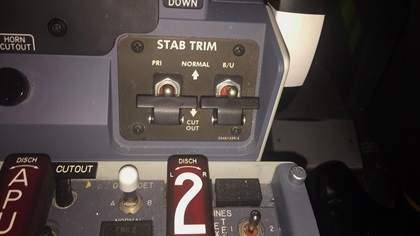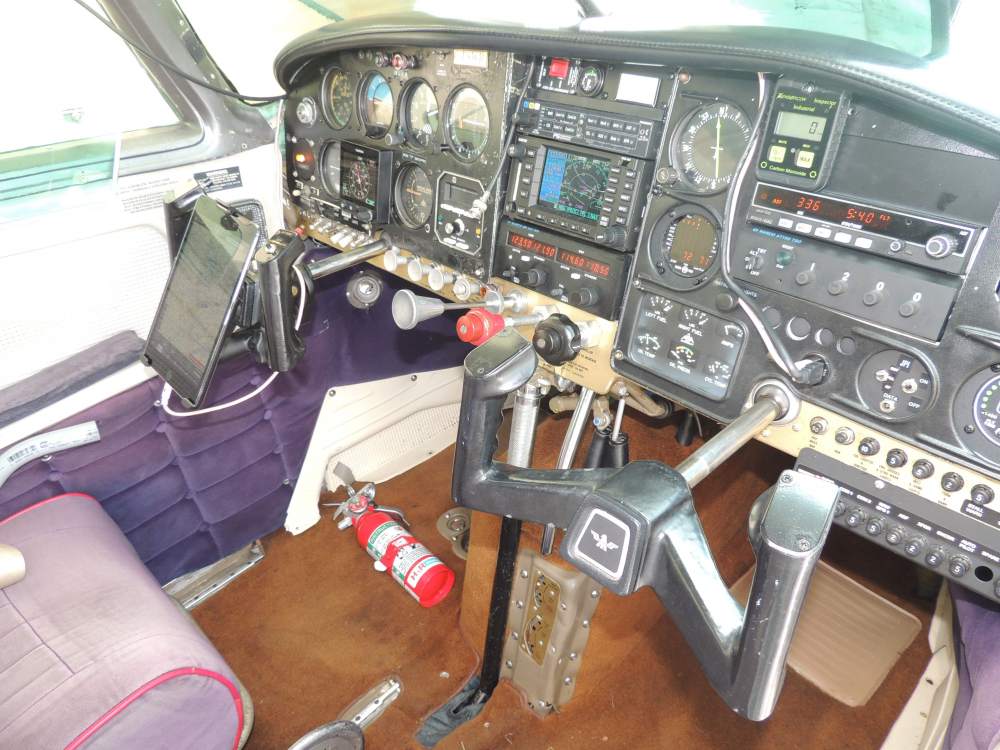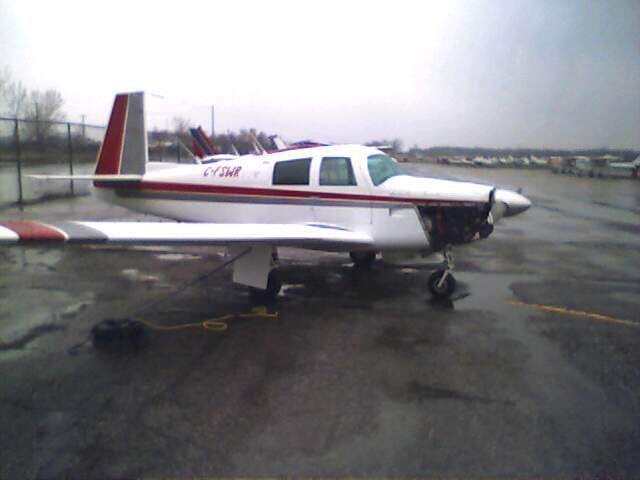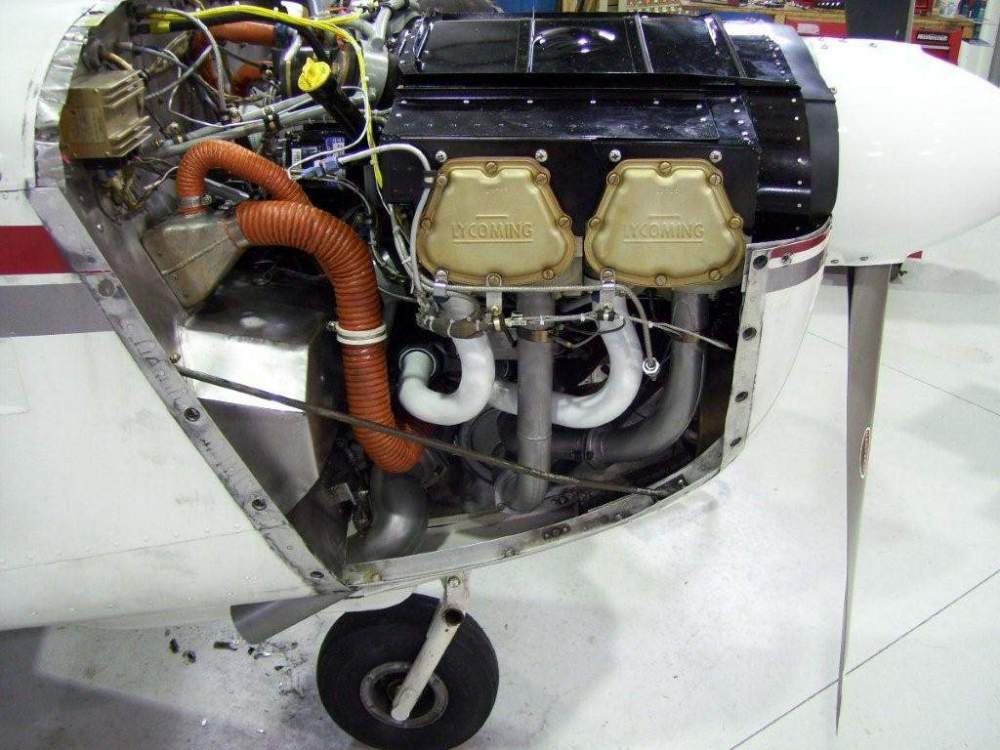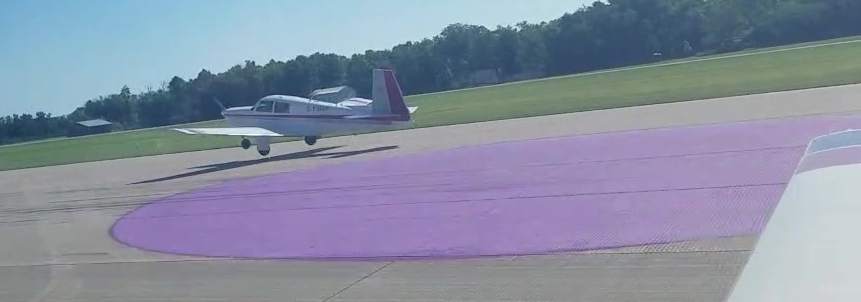
Ned Gravel
Supporter-
Posts
2,069 -
Joined
-
Last visited
-
Days Won
2
Content Type
Profiles
Forums
Blogs
Gallery
Downloads
Events
Store
Everything posted by Ned Gravel
-
iPad Mini4 vs bigger or wait for a the mini 5
Ned Gravel replied to Seth's topic in Avionics/Panel Discussion
The folks at sporty's have already sent out their PIREP on it at https://ipadpilotnews.com/2019/03/first-impressions-after-flying-with-the-new-ipad-mini/. -
Station radio licenses (aircraft installations) are required because of the agreement between our two nations. However, in 14 years of crossing the border and flying in both nations, no one has ever asked me for it. One difference is that mine costs me $36.00 Cdn (about $27.00 USD) per year
-
Crash - T-28 hits a Cessna 152 at Compton KCPM
Ned Gravel replied to apenney's topic in Miscellaneous Aviation Talk
me too. There but for the Grace of ......... -
Crash - T-28 hits a Cessna 152 at Compton KCPM
Ned Gravel replied to apenney's topic in Miscellaneous Aviation Talk
I agree, but he might not have seen the Cessna until he was too close to him to effectively slow down from his somewhat faster rollout speed. Bad situation all round and someone paid the ultimate price for it. For most of us a statistic, but for someone close to them, a hole in their lives where a person once was. Old soldier saying: "Weep not for those who have gone, but for those they have left behind." We had a similar incident in our own area at the beginning of November. 150 turns on final in front of a Cheyanne. 150 does not announce on the downwind or on final on the CTAF. Cheyenne did announce over the IAF, 5 mins out, and approaching the FAF for the simulated approach. Almost the same conditions - but no setting sun - it was mid morning. We lost the 150 pilot sometimes known to not want to talk to anyone while flying - but blame is too easy. So the community mourns and most of us are reminded to help those who may not see us by telling them where we think we are and what we are doing. Might have helped - or it might not have helped. Don't know. See http://www.bst-tsb.gc.ca/eng/enquetes-investigations/aviation/2018/a18o0150/a18o0150.asp for the progress of the TSB investigation. Personal reminder nonetheless - using the CTAF can save a life - especially my own. TSB may find something else, and I will learn from that too, but for now, this is my own take away. Just me. Requiescet in pace -
Crash - T-28 hits a Cessna 152 at Compton KCPM
Ned Gravel replied to apenney's topic in Miscellaneous Aviation Talk
I know what you are saying, and it still may be difficult to see over the cowl on approach (given the size of the radial engine up front) but a T28 is a tricycle gear aircraft, not a tail dragger. -
The video from Nov 2018 that @tigers2007 posted showed what to do when the system calls for nose down and the crew believe it may not be warranted. Solution? Turn these off. The same solution is shown, in part, by the latest AOPA entry into the discussion at https://www.aopa.org/news-and-media/all-news/2019/march/14/faa-grounds-boeing-737-max-fleet. It appears that modifying operations manuals, modifying crew training, and one software modification (apparently due out in April) may resolve the issue altogether. But maybe that is just me being hopeful.
-
I think folks are touting a "new set of data" that was acquired by the FAA and our own Transport Canada. If you ask this ol' programmer, there are a couple of lines of code that are not doing what the programmer thinks they are doing. Just my opinion because I have been there before while wearing a uniform and deploying new IT solutions to our modern battlefield at some astronomical dollar value with the Brits and 8 times that amount for the US Army way back when.
-
I installed a G5 last year and it looks like this. Went with my brand-new-to-me Garmin 480. Now I can do close to 95% of published instrument approaches North America. Before, I bought the 480, I figured I could only attempt about 30% of them. Replacing my Trimble TNL 2000A with the 480 was not enough on its own. I had to replace the DG with an HSI that accepts RNAV inputs from the 480, or get an OBS that did the same. With the lack of panel space you see here, there was only one solution available (especially if I wanted to keep my NARCO in the nav game with its own OBS). Love it!!!! Love it!!! During the MAPA PPP in Manchester, NH last year, the instructor stuck a post--it paper over my AI. No problem. The G5 became my AI about 10 seconds later. Aviate - navigate - communicate. So he took the post-it note off. Mind you, my performance on instrument approaches was awful during those two days, but practice with the new setup is allowing for more precision.
-
Tom: It is not smooth and comes with a bunch of valleys and troughs in the sheet metal. Don't ask me why. It just is. And before you ask, my MSC started their relationship with me by saving me about $50,000 in "lemon" costs. Then he went on to save me another $17,000 or so in "not airworthy so drop the asking price by the amount to repair it" costs.
-
I have used a non-MSC. This is what that looks like: That was the only time I did not use an MSC. This is what using an MSC looks like. We are done here.
-
Formation Flying was an Amazing Experience!!!
Ned Gravel replied to jerrodmonaghan's topic in General Mooney Talk
We should all remember the old wingman adage: "If you are not sweating, you are probably out of position." It really does take work. Perhaps less so with more experience, but never so little that one can assume it's all good. One other piece of advice I got early on was to not fly formation alone - especially in the beginning. The wingman has no time to watch all the instruments we normally watch in cruise. We have constant visual of lead and are using hands and feet to maintain position: control column, throttle, and rudders. That's it. We look at nothing else. This is most true in fingertip formation - and perhaps less so in route formation (more separation) but still not a lot less. So having someone else watch things like MAP, temps, circuit breakers, etc is a lifesaver. Not too worried about all the attitude instrumentation - lead's got that. But everything else that tells me about the health of my aircraft is not really accessible to a wingman in fingertip formation, until you get a lot more experience. Bring someone else along to do that. And didn't we say that, given good training and practice, this would be so much easier than the FISK arrival? -
Formation Flying was an Amazing Experience!!!
Ned Gravel replied to jerrodmonaghan's topic in General Mooney Talk
Clarence: Having done this for six years now, I can tell you that no wingtip in that picture is closer than 25 feet from any other aircraft - and more likely up to 35 feet away. -
Non-profit question for our lawyer members
Ned Gravel replied to Rick Junkin's topic in Miscellaneous Aviation Talk
Rick: Consider making it a for-profit entity. How you structure your business is far less important than what you want out of it. The optic of a not-for-profit is losing its lustre in many circles because of the integrity (or lack thereof) of the people running them. As well, regardless of how little you personally make (draw or earn in salary) in either category, only a for profit allows you to collect for the equivalent of "sweat equity." It is called "loans from owner" or some other term. And if you haven't figured this out already (which would really surprise me knowing how you feel about integrity), it does not matter which structure you use, reputation will come first - then coverage of operating expenses (profit) follows. Not the other way round. No amount of marketing helps build reputation. How do I know this? www.motiva-training.com. Been doing this for nearly 8 years now. Clients are from all over the world. Give advice for free (no charge). Some of them come back and pay for our ability to do the pro bono work. The real difference between our (yours and mine) commercial endeavours is that there is nearly zero risk associated to my company for the work I do. Most of my clients are international aid organisations (UNIDO etc), national accreditation bodies or some other part of a national government. They tend to sue less and terminate more. There is much more risk associated with flight training and the consequence of things going wrong. If someone has told you that any legal entity you may establish (however that is defined or structured) will protect thee and thine from exposure in the case of legal action - be skeptical. These are no longer the days of Salomon v. Salomon (Salomon v A Salomon and Co Ltd [1897] AC 22). I am not a lawyer, and this is not legal advice. It is unsolicited opinion based only on personal experience. It is worth exactly what you paid for it. Now stop listening to me. Go have fun building something worthwhile. And get a good lawyer. Can you spell: "minute book?" -
Jerrod: That is nothing compared to the scare you will get if you try the FISK arrival. Hundreds of aircraft inbound and not all of them see each other (or you). If you do this, use the 1300' 135kts till the controller puts you on the downwind (or base or final) depending on what they think is available for you. Caravan is a piece of cake compared to the FISK arrival and everyone you fly with knows exactly where you are. We have trained together. We know our airplane and we have a pretty good idea of yours. Good leadership. Good procedures. Good training. Great outcome. But that is just me. (Update): Following Sandman to the Purple dot in 2015. Following Sandman to the Purple Dot small.mp4
-
iPad Mini4 vs bigger or wait for a the mini 5
Ned Gravel replied to Seth's topic in Avionics/Panel Discussion
All I really need is sufficient computing power to run Foreflight Pro (Canada and US) and telecom connectivity to file plans when completing my walkaround. Mini 4 does that now. Mini 2 is my backup, but I may transfer that to one of the iphones and stick that to the sun visor a la Piloto if it comes cheap enough. Will be prepared to invest in a Mini 5 if any part of my current solution/backup goes south. -
Mooney Caravan XXII Registration Now Open
Ned Gravel replied to CCowboy's topic in General Mooney Talk
Boston? Try starting two Mooney hours further north. -
Mooney Caravan XXII Registration Now Open
Ned Gravel replied to CCowboy's topic in General Mooney Talk
Bing! Bing! Bing! Correlation established. Ute and I were going to stop and see them on our way to Orlando in January, but ended up taking a direct aluminum tube driven by Air Canada because of wx. Now we will get a chance to meet them. -
Mooney Caravan XXII Registration Now Open
Ned Gravel replied to CCowboy's topic in General Mooney Talk
Done. Doing the MAG clinic this year. See the rest of you in Madison... -
OK, so we now know who had their wheaties today....
-
I like the photo. Mine is camouflaged as a snowbank.
-
Caravan 2019 - Mid Atlantic Formation Clinic - registration open
Ned Gravel replied to Bob_Belville's topic in Mooney Caravan
Signed up. Registered. Booked. Paid. ...... -
I used a Mini 2 - until it got overtaken by processor not being able to keep up. Then I went to a Mini 4, which is working just fine. I traded my Stratus in for a Sentry so ADSB In, (for traffic, wx - incl enroute METARS) is just fine. I keep the Mini 2 as a backup. My phone is a 5S but I may allow myself a faster (newer) version of the iPhone that I can stick on my sunshade (a la @Piloto) to act as my next backup. In hard IFR approaching the IAF, I now use the synthetic vision as a reference for GPS and ILS approaches. Much less chasing of the needle - corrections are done in finer increments and it looks much better - in other words, I trust the real needles more.
-
No partial flap extension is provided for in my POH. 65 E model. One speed. 100 MPH. No flaps allowed above that speed. 1965 Mooney M20E Owner's Manual (POH) Page 24: "Flap speed is 100 mph."
-
From the MAPA PPP last September, the book MAP and RPM for the FAF were taught to us to be about 2350 RPM (just out of the yellow line for my 65 E model) and about 15" MAP. Those setting put the speed about 120 MPH. My flap limit is 100 MPH so, no go there. As well, the book stipulates the gear as Down at the FAF - (or, for me, on the downwind if a VFR approach). Before this training, the first of three GUMPS callouts hung it all out there well before the FAF. The gear was down before the FAF and I had FULL FINE on the RPM and then used the throttle to keep it below 100 MPH from the FAF on down through the DH/MAP to the actual touchdown (cheater method of ensuring the aircraft is ready for go round with only throttle to move). When visual was attained before the DH or MAP, then flaps could come down then. 3 GUMPS checks called before the DH/MAP. Now, after this training, I am trying to use the recommended settings, but besides messing up my previous GUMPS callouts, I have to mess with the Governor to FULL FINE only on reaching DH/MAP (or visual acquisition whichever comes first) and dropping the gear ONLY at the FAF still throws my anchors out into the wind well before the DH/MAP (still don't like what it does to my GUMPS callouts). Not yet fully in muscle memory yet. But to answer the question - not at or before the FAF for flaps and only two pumps when runway acquired.
-
I could be wrong, but a single G5 (in the HSI slot) does not provide any flight director capabilities and the GFC 500 has that option. So one G5 does horizontal direction input, even GPSS, but no vertical. That is what I have now (with an STEC 50). I have seen a single G5 in the AI/FD slot and that should provide vertical FD capability.


